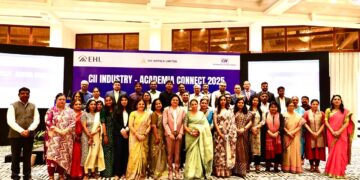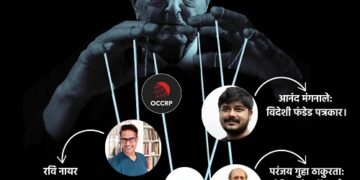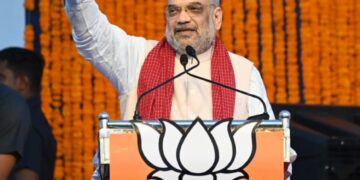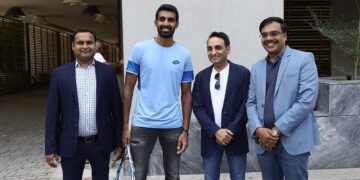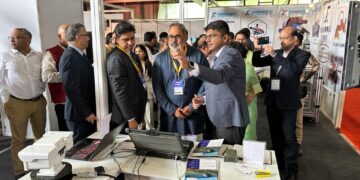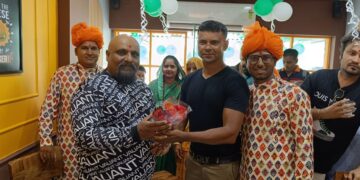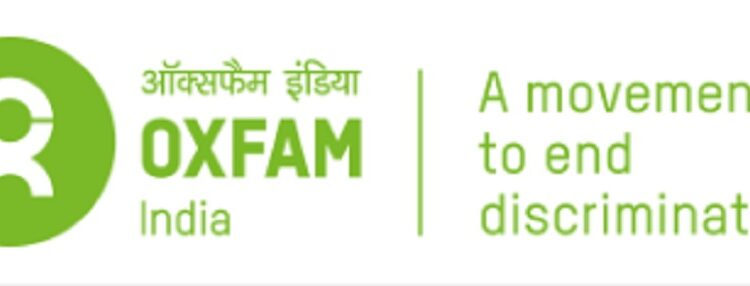SEPTEMBER 2022, : Oxfam India’s latest ‘India Discrimination Report 2022’ finds woman in India despite their same educational qualification and work experience as men will be discriminated in the labour market due to societal and employers’ prejudices. The academically recognised statistical model applied in the India Discrimination Report is now able to quantify the discrimination women face in the labour market. The lower wages for salaried women are due to 67 percent of discrimination and 33 percent due to lack of education and work experience.
Oxfam India calls on the Government of India to actively enforce effective measures for the protection and right to equal wages and work for all women. The Government of India should also incentivise the participation of women in workforce including enhancements in pay, upskilling, job reservations and easy return-to-work options after maternity.
These findings are based on Government of India data on employment and labour from 2004-05 to 2019-20. The Oxfam India report refers to unit level data from 61st round National Sample Survey (NSS) data on employment-unemployment (2004-05), the Periodic Labour Force Survey (PLFS) in 2018-19 and 2019-20 and All India Debt and Investment Survey (AIDIS) by the Union Government
“Discrimination in the labour market is when people with identical capabilities are treated differently because of their identity or social backgrounds. There have been very limited attempts made to measure the extent of discrimination and its impact on the lives of marginalised communities in India so far. There have been even fewer attempts to quantify discrimination through rigorous research methods and credible data. Oxfam India conducted extensive analysis of government data from 2004 to 2020 to understand the inequality and discrimination when it comes to access to jobs, income, health and agricultural credits across the country. What the report finds is if a man and woman starts on an equal footing, the woman will be discriminated in the economic sphere where she will lag behind in regular/salaried, casual and self-employment. The inequality in the labour market for gender and other social categories, the report finds is not just due to poor access to education or work experience but because of discrimination”, said Amitabh Behar, CEO of Oxfam India.
The findings of the Oxfam report indicate discrimination as a driving factor behind low Women’s Labour Force Participation Rate (LFPR) in the country. As per the Union Ministry of Statistics & Programme Implementation (MoSPI), LFPR for women in India was only 25.1 percent in 2020-21 for urban and rural women. This is considerably lower than Brazil, Russia, China and South Africa as per the latest World Bank estimates. The LFPR for women in South Africa is 46 percent in 2021.
The LFPR for women in India has rapidly declined from 42.7 percent percent in 2004-05 to mere 25.1 percent in 2021 showing the withdrawal of women from the workforce despite rapid economic growth during the same period. In 2019-20, 60 percent of all males aged 15 years and more have regular salaried and self-employed jobs while 19 percent of all similarly aged females get regular and self- employment.
There is also a significant gap in the earnings between men and women in the case of regular and self-employment in urban areas. The average earning is INR 15,996 for men and merely INR 6,626 for women in urban areas in self-employment. The men’s average earning is nearly 2.5 times that of the earnings of women Professor Amitabh Kundu one of the authors of the India Discrimination Report said, “There have not been many attempts to quantify discrimination faced by marginalised communities across the country. We have used a statistical method called ‘decomposition’ to understand differential outcomes in employment, wages, health, and access to agricultural credit among various social groups. This has helped us to quantify discrimination faced by marginalised communities from 2004-05 to 2019-20. The findings of the report are unique and this will help the policy makers of the Union and state governments to design programmatic interventions that will tackle discrimination bring inclusivity in the labour, capital and endowment markets
Apart from women, historically oppressed communities such as Dalits and Adivasis along with religious minorities such as Muslims also continue to face discrimination in accessing jobs, livelihoods, and agricultural credits. The mean income for Scheduled Castes (SCs) or Scheduled Tribes (STs) persons in urban areas who are regular employed is INR 15,312 as against INR 20,346 for persons belonging to the General Category. This means the general category is earning 33 percent more than SCs or STs as per the report. The average earning of self-employed workers is INR 15878 for non-SCs or STs and INR 10533 for SCs or STs.
The rural SC and ST communities are facing increase in discrimination in casual employment, the report shows. The data shows that the unequal income among urban SC and ST casual wage work is because of 79 percent discrimination in 2019-20.
Self-employed non-SC/ST workers earn a third more than their SCs or STs counterparts. Caste also acts as a major barrier while accessing credit for agriculture despite many agricultural labourers being from SC or ST communities. STs and SCs receive less than a quarter of the credit shares that Forward Castes (FCs) receive, the report shows.
Muslims continue to face multidimensional challenges in accessing salaried jobs and income through self-employment as compared to non-Muslims. In rural areas, the sharpest increase of 17 percent in unemployment was for Muslims as compared to non-Muslims during the first quarter of the COVID-19 pandemic making rural Muslim unemployment rate 31.4 percent. 15.6 percent of the urban Muslims population aged 15 and above were engaged in regular salaried jobs whereas 23.3 percent of non-Muslims are in regular salaried jobs in 2019-20.
The lower employment for urban Muslims attributes 68.3 percent to discrimination in 2019-20. The report shows that the discrimination faced by Muslims in 2004-05 was 59.3 percent, indicating an increase in discrimination by 09 percent over the last 16 years.
Regular-salaried non-Muslims in urban areas earn INR 20,346 on average which is 1.5 times higher than Muslims who earn INR 13672. This means non-Muslims are earning 49 percent more than Muslims in regular employment, the report noted. Self-employed non-Muslims earn INR 15878 on average while self-employed Muslims earn INR 11,421 despite the overrepresentation of Muslims in urban self-employment. This means non-Muslims are earning a third more than Muslims in self-employment.
“The fall-out of discrimination in our society is multi-faceted, not just social and moral but also economic leading to adverse consequences to society. Oxfam India is looking forward to the active engagement and dialogue among government and political parties, policymakers and civil societies, and all other stakeholders that are in pursuit of a just society and to collectively move towards the building of a discrimination-free India”, said Amitabh Behar.
Oxfam’s ‘India Discrimination Report 2022’ shows the COVID-19 pandemic has devasted lives and livelihoods of marginalised communities and calls for immediate relief measures for equal and inclusive pandemic recovery. Below are some brief recommendations from the report:
Actively enforce effective measures for the implementation of the right to equal wages and work for all women.
Work to actively incentivise the participation of women in workforce including enhancements in pay, upskilling, job reservations and easy return-to-work options after maternity.
Work to actively challenge and change societal and caste/religion-based norms, around women’s’ participation in labour markets.
Strengthen civil society’s engagement in ensuring a more equitable distribution of household work and childcare duties between women and men and facilitating higher participation of women in labour market
Implement “living wages” as opposed to minimum wages, particularly for all informal workers and formalise contractual, temporary and casual labour as much as possible. Extend priority lending and credit access to all farmers, regardless of social groups and penalize biased lending.
Implement major initiatives to address endowment deficits for religious minorities particularly the Muslims.
Ensure that caste-based representativeness and affirmative action for ST/SC continue with focused and accurate welfare targeting. Improve the quality of internal facilities in public hospitals and facilitate accessibility to hospitalisation for socially marginalised groups through incentives; extending insurance coverage and reservation of beds in private hospitals.


